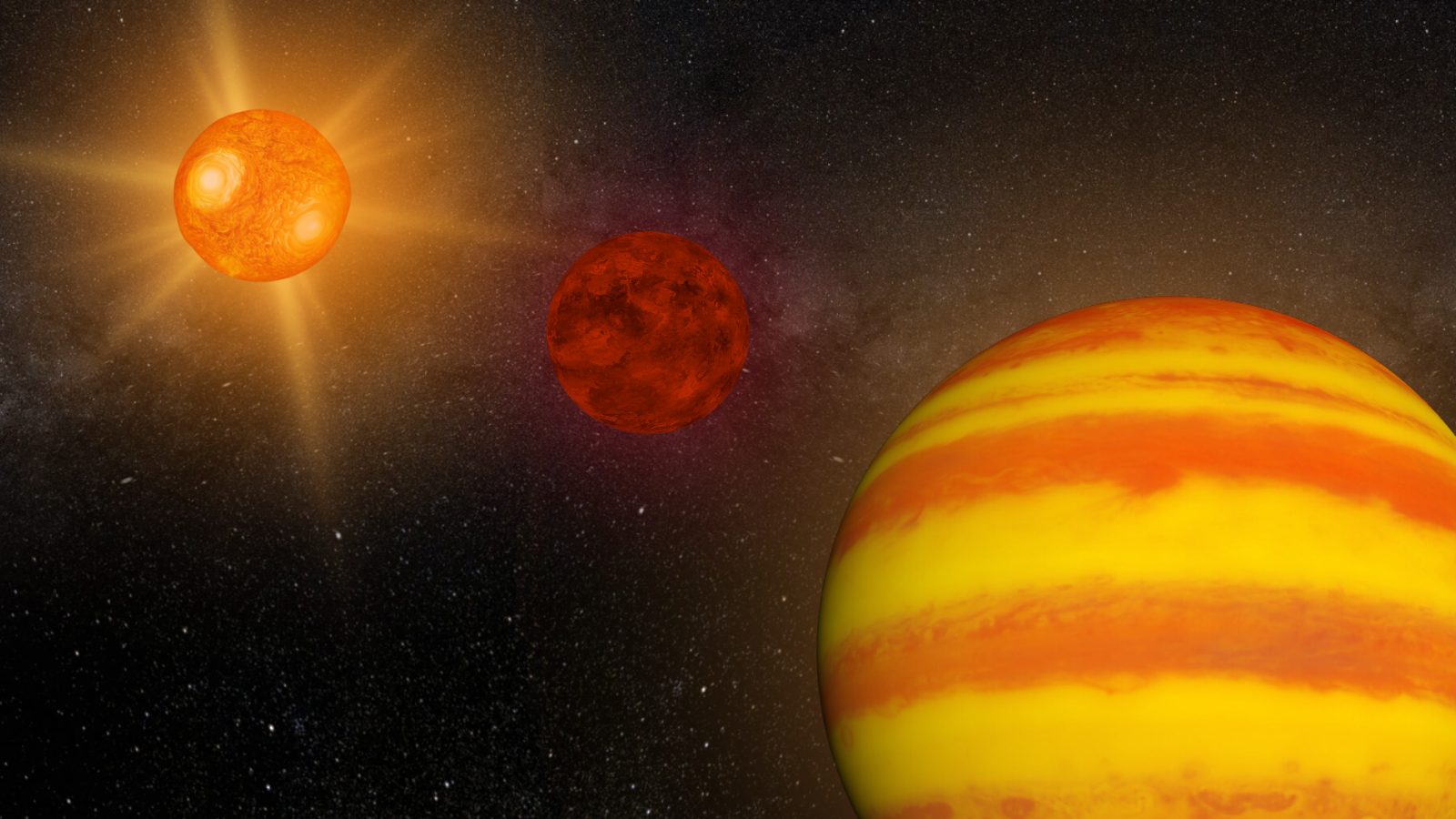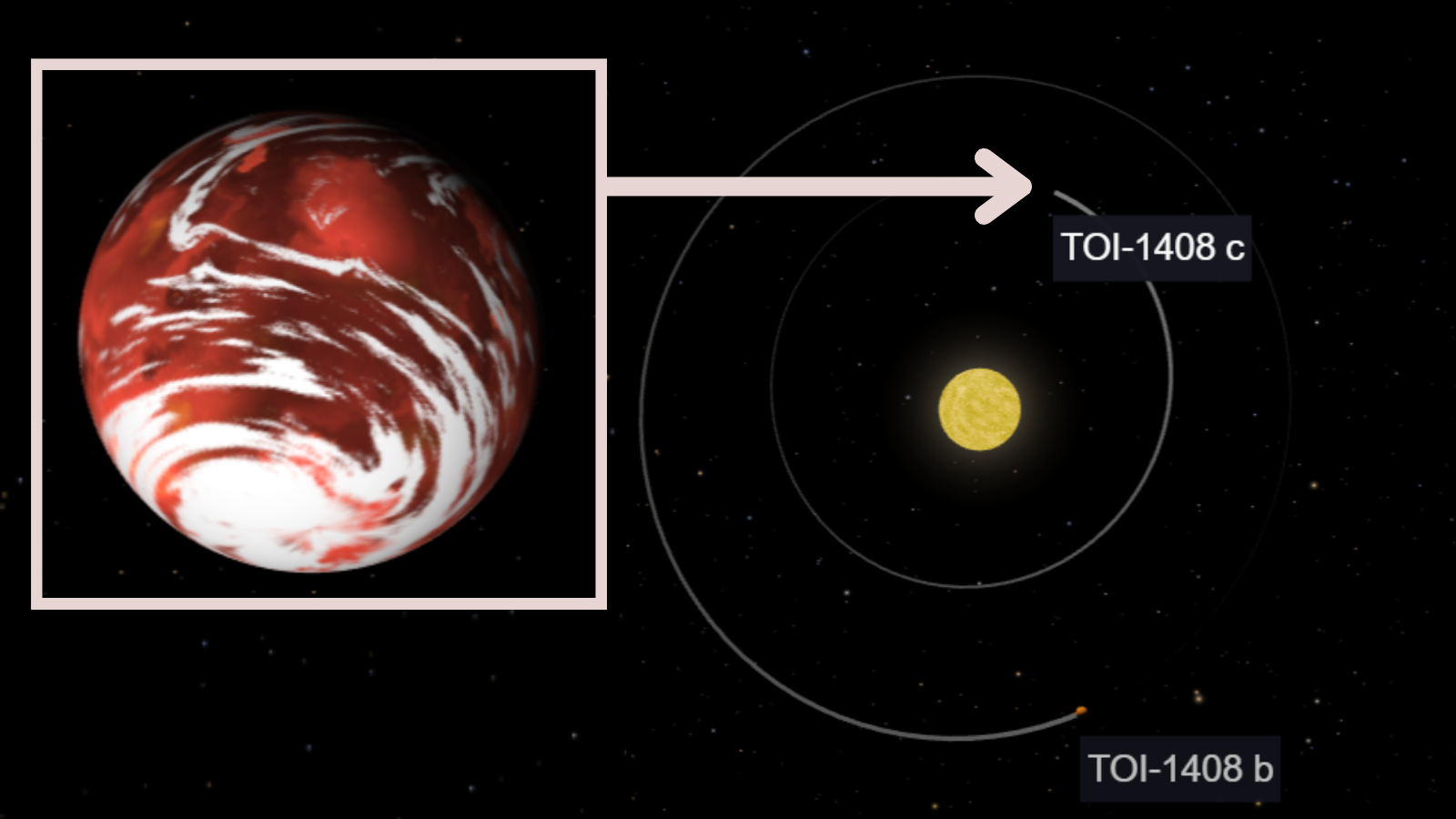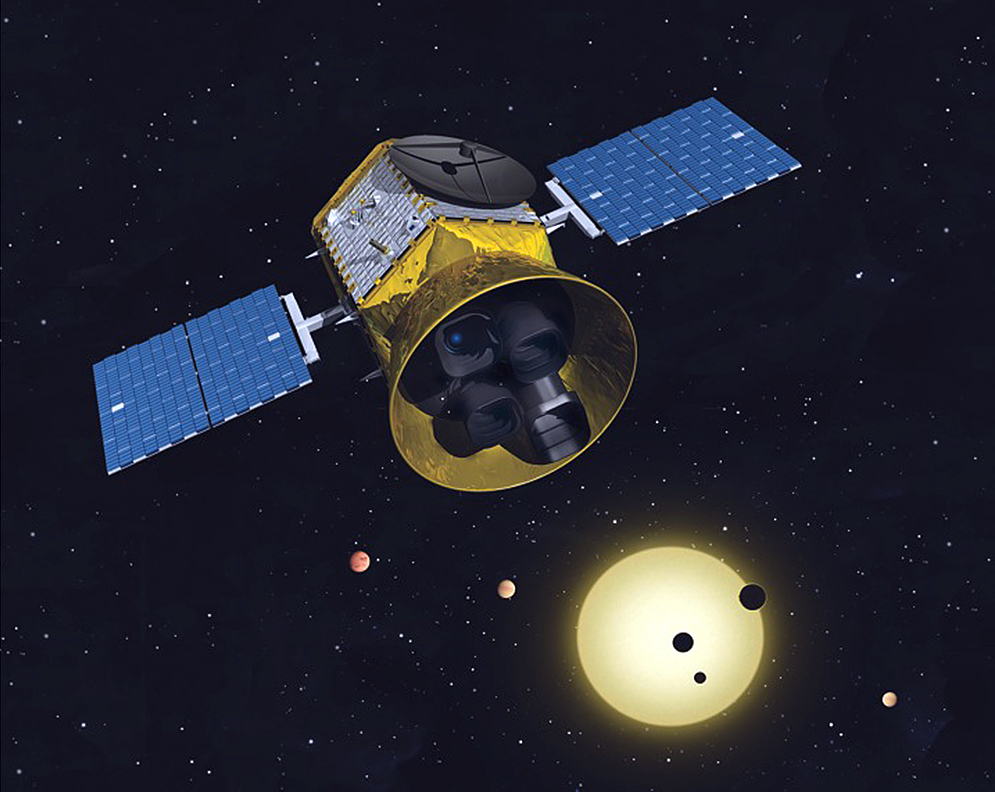
Scientists have discovered that a distant "hot Jupiter" world has a planetary companion. The two planets are locked in a rhythmic dance around the star TOI-1408, located 455 light-years from Earth.
First discovered just last year using NASA's exoplanet-hunting spacecraft, TESS (Transiting Exoplanet Survey Satellite), TOI-1408 b is a gas giant planet that is over twice the width of Jupiter and almost twice the mass of the solar system gas giant. It orbits its parent star at a distance of 5.3 million miles, about 6% of the distance between Earth and the sun. This means TOI-1408 b completes an orbit in just 4.4 Earth days.
This size and proximity to its star classifies TOI-1408 b as a "hot Jupiter," but remarkably, its newly discovered companion is even closer to the system's parent star. The companion, TOI-1408, c is just 3.3 million miles from its star, meaning it completes an orbit in 2.2 Earth days. Yet this newly found planet isn't a hot Jupiter.
With a width around two times that of our planet and a mass eight times that of Earth, TOI-1408 c is classed as a "super-Earth" or a "sub-Neptune." Unlike TOI-1408 b, which is mostly gas, TOI-1408 c is likely to be composed of a mix of gas and rock.
Related: These nearby star systems could be good targets in the search for alien life (video)
"Both TOI-1408 b and TOI-1408 c are incredibly close to their parent star compared to the planets in our solar system," research lead author Judith Korth of Lund University told Space.com. "Imagine our solar system, but instead, Jupiter is orbiting very close to the sun nearly every four days, one-twentieth of the period of Mercury.
"This is already very close to the star, and still, we detected another planet even closer to the star that interacts strongly with its big neighbor, causing their orbits to wobble in ways we've never seen before."
Korth explained that while it was surprising to find an extrasolar planet or "exoplanet" in the TOI-1408 system closer to its star than TOI-1408 b, finding a gas giant with its orbit being disturbed was even more peculiar.
"Finding a hot Jupiter like TOI-1408 b whose orbit is perturbed is already interesting because it's unusual for such massive planets. But discovering that there's an even smaller planet that moves the big planet in its orbits was even more unexpected," she continued. "This discovery challenges some of our assumptions about how these planetary systems form, as we typically don't find smaller, lower-mass planets inside the orbit of a hot Jupiter."
Rythmically dancing worlds
However, something else makes this system extraordinary: its two planets are engaged in a finely tuned rhythmic dance. That's despite the smaller TOI-1408c tugging on its hot Jupiter dance partner, with the TOI-1408 system seeming to have a stable configuration that allows these two planets to coexist in close orbits.
"The system’s dynamics are finely tuned, likely as a result of its formation history. The planets' orbits are near a 2:1 period ratio, meaning for every two orbits of TOI-1408c, TOI-1408b orbits the star once," Korth said. "This might help stabilize their orbits despite their proximity to each other and the star."
She added that the exact reason the TOI-1408 system formed this way is likely the motion of the planets through the disk of gas and dust that surrounded its star in its infancy, the so-called "protoplanetary disc" where the planets formed.

TESS has become an extraordinary exoplanet hunter, discovering over 7,000 possible exoplanets since it launched in 2018. The TOI-1408 planets are two of the latest.
The NASA exoplanet hunter has been studying 200,000 of the brightest stars in the vicinity of the sun, spotting planets as they cross or "transit" the face of their parent stars, causing a tiny dip in the stellar light.
The star TOI-1408 is just such a star. With a mass 1.3 times that of the sun and 1.5 the width of our star, TOI-1408 is slightly hotter and brighter than the sun. While TESS discovered both TOI-1408 b and TOI-1408 c, the smaller planet was a little tougher to spot.
"TOI-1408 c was harder to detect because its transits — when it passes in front of the star from our point of view — are much shallower, meaning it blocks less light from the star compared to TOI-1408 b," Korth said. "Additionally, TOI-1408 c's transits are affected by significant transit timing variations (TTVs), which means the timing of its transits isn’t as predictable as TOI-1408 b's."

Korth added that these TTVs are caused by the gravitational interaction between the two planets, and they meant more sophisticated analysis was required to detect TOI-1408 c.
"We discovered TOI-1408 c by carefully analyzing the light curves from the TESS satellite for TTVs of the larger planet TOI-1408 b," she continued. "These TTVs could be produced by gravitational interaction with another planet, yet no other planet was known to the TESS team."
Detecting a transiting signal that could come from another smaller planet with a shorter orbital period than the known planet, to further characterize the nature of the small planet candidate, the team used photodynamical modeling, which combines both the transit light curves and radial velocity data to account for the complex interactions between the planets.
The team isn't done with the TOI-1408 system yet, with clues that it may possess at least three worlds. However, if there are more planets in the system, they are unlikely to be within the orbit of TOI-1408 c.
"There are hints that there might be a third, more distant planet in the system, based on radial velocity data showing a possible long-period trend. However, as for planets even closer than TOI-1408 c, we haven’t found any evidence of that so far," Korth said. "TOI-1408 c is already very close to the star, and it would be difficult for another planet to maintain a stable orbit inside of that."
"The TOI-1408 system is incredibly intriguing, so we certainly plan to continue studying it. We want to better understand the potential third planet and explore the system's long-term stability," Korth concluded. "However, we're also continuing to explore other planetary systems.
"Every new discovery like TOI-1408 c helps refine our models and understanding of how planets form."
The team's research is published on the paper repository arXiv.







